Are trade shows fun again?
Being who we are and doing what we do as part of DJWORX allows us to mess with every new piece of kit that hits the market (and some that don’t). We analyze, we dissect, we take pictures and write words – and sometimes, we get a little excited. Getting our minds blown, however, is something that doesn’t happen very often – especially in today’s overcrowded market, where the overabundance of boringly similar products leads to design decisions made for the sake of marketability over actual useability. It’s blatantly obvious that the wrong people are in control, trying to make us think we need certain features (has anyone actually ever used Flips? just asking), although we really don’t.
So, while the larger part of the industry has been busy trying to refabricate a friction-reducing rotary transportation enhancement device using the algebraic equation x² + y² = r² (reinvent the jogwheel) and sell it, Rane has calmly stepped onto the stage like a boss and performed the DJ gear equivalent of a mic drop, wrapped in a simple statement:
ROTARY IS BACK, designed by DJs for DJs.
If you’ve been following their social media channels, recent articles about Rane’s legacy of mixers (specifically the now legendary MP2016 and its signal processor counterpart, the XP2016) posted only a few days before NAMM were more than just a subtle hint. Clearly, something was about to happen – but nobody was really prepared for the arrival of the MP2015 and the impact that it would have. There was no elaborate teaser campaign, no showcase video for us to take apart frame-by-frame. Instead, what happened was what I want all trade show announcements to be: a complete surprise. If you remember our team retrospective of 2014, this is one of the things that really annoyed me personally (why do we even go to trade shows when our readers know everything in advance?), so starting off 2015 with a moment like this felt great. All of a sudden, the info was out there, and all the well-deserved buzz was generated by the DJ community alone – this is how it should be done, industry people take note!

Rane MP2015: The Beauty in the Beast
Being at NAMM early gave me the opportunity to take some detailed shots of the unit for you to drool over – but more importantly, I’ve had plenty of hands-on time which I’ll do my best to turn into words here. Experiencing the MP2015 begins with trying to handle its sheer presence, and if you’ve seen some of the comments on the official press release when it made its way though social media, you know I’m not kidding. A lot of people including myself had nothing to say except:
“Damn… there’s something about this that somehow makes me want to DJ“
…and that was just the pictures. Standing in front of this monster is a whole different story. Even though my performance style consists mostly of slamming faders and pushing buttons, I’ve had a secret love affair with the Empath rotary ever since I first played on one – therefore, putting it simply, the MP2015 gives me goosebumps. It’s as sexy as an inanimate object can ever be to a nerd (hint: very sexy). The knobs, the switches, the buttons, the knobs, the LED level meters – did I mention the knobs? It has laser-engraved wooden side panels, too, and the layout of the controls flows together beautifully. Again, I’m not exaggerating for the sake of being funny or anything – it’s just that awesome. It makes me want to dust off some records that haven’t really received the love they deserve in years — and then it makes we want to use it to play my live sets on.

Having shaken the initial shock and awe, it’s time get into the technical side of things, which is where it gets really interesting. Just like the Sixty-Two and Sixty-Four, this mixer has a multi-client audio interface which allows you to work with 2 computers connected to it, and each channel of course has an input selector switch – but you should notice the complete absence of any Serato branding. This means that Serato DJ is not supported – at all. The mixer is also not Traktor scratch certified, so there’s no official plug’n play DVS support at this point – at all.
Besides working with vinyl and CDs, you can of course use the MP2015 as the command center of a controller-based setup, provided you’re using software that – like Traktor or Ableton Live – gives you customizable audio input and output routings. Serato doesn’t. Perhaps we’ll see some form of partnership emerge over time – one could argue that hooking up turntables directly to a mixer is much more comfortable than having to use an additional box… but that’s a case of first world problems if I’ve ever seen one. Edit: although there is no official support, you can probably use Virtual DJ as a DVS directly – it works with my Sixty-Four, I see no reason why it wouldn’t work with the MP2015.
Submix and Isolator: sculpting your mix
Perhaps the greatest thing about the MP2015 is how much thought went into making the work flow as flexible and hassle-free as can be. There are two features that truly make it stand out: the Submix and the Isolator. The Submix works as follows: the MP2015 has an additional mix bus – complete with EQ, filter and volume controls – that you can send any or every channel (including the session input) into in order to control their mix parameters as a group. If you’ve ever worked with a live mixing console, this should be familiar to you, but DJs don’t normally get anywhere near this level of control.
All you need to understand the power of this feature is to ask yourself how often you’ve wanted to do things that required more hands than you were born with (like filter 3 channels at once). Whether you work with 4 decks in Traktor or use the mixer to blend four stem groups from Ableton Live, this is just awesome. Also, maybe techno DJs can finally relax a little when they get their hands on this (the knobs are lava, the knobs are lava!). Stop trying to be the Wizard Mixhibitionist Jeff Mills, kids.
Then there’s the Isolator. If you’re not familiar with this term, think of it as an EQ on steroids that goes on your master channel (and can, of course, be bypassed). Just like your channel EQ, it has three frequency bands – but it also has adjustable crossover frequencies between those bands. The crossover between lows and mids ranges from 80 to 640 Hz, the one between mids and highs ranges between 1kHz and 8kHz. This gives you incredible control in terms of shaping your overall sound – and this is the part where words just completely fail at conveying the awesomeness within. I’ve overheard one of the NAMM visitors saying:
“I can listen to my Black Sabbath records with this properly… the originals, you know, not the re-mastered crap”.
You can indeed make your entire mix sound radically different, but you absolutely have to know what you’re doing. Although this seems obvious going by the price tag alone, I feel like making it absolutely clear: the MP2015 is not a mixer for beginners. It’s a weapon for mix perfectionists. The amount of control leaves no room for excuses – it won’t magically fix your blends, it will expose mistakes ruthlessly – but in capable hands, it will sound better than anything you’ve heard in your life. The only problem will be finding an adequate sound system capable of translating its massive (116 dB!) output properly – your average neighbourhood club probably won’t stand up to the challenge. If I can get my hands on this mixer to review it, I will have to travel and visit a friend of mine who is not only one of the best deep house DJs around, but also a bonafide acoustics wizard (hi Laurin) and hook it up to the incredible sound system he’s been in charge of for years, constantly tweaking it in his pursuit of sonic perfection.
There was way too much noise at NAMM (obviously), but I had my NOCS NS900 with me and that alone left me speechless. Truth be told, even if I got to listen to it on a proper sound system, what more could I possibly tell you that would convey the experience? My vocabulary is insufficient. The reason why DJs use music is because sometimes, words aren’t enough. Long story short: if you ever get the chance to play on the MP2015, make sure you celebrate it.
More true facts about the MP2015
So… did I mention the knobs? Oh yeah, I probably did. Here’s why I’m raving on about them. To quote one of the Rane engineers I’ve spoken to at the show:
“you know, there’s a difference between components that cost a few cents and components that cost a few dollars a piece”
In short, the MP2015 is a no-compromise piece of hardware. The knobs have been tested for at least ONE MILLION cycles – this is no joke. They look really impressive, the feel and handling is amazing – again, I’m at a loss for words, and you will only understand once you’ve touched them yourself. There’s only one problem: they won’t fit on a Sixty-Four.
Let’s look at some more details. The filters on the MP2015 can operate in three modes – you can have full low-pass, full high-pass and also a bi-directional mode just like on the Sixty-Two and the Sixty-Four. You can control the resonance of all five filters (four channels + the Submix bus) with a dedicated knob, too. The session input can be switched between physical inputs (RCA and digital S/PDIF) and a USB source and, as mentioned before, can also be routed to the Submix. The microphone input (XLR & TRS combo) accepts line and mic levels and can provide 48V phantom power if needed. The microphone section comes with level and frequency controls as well as a momentary “duck” button which lowers the overall volume for talkover. The PFL section has a split cue button in case you need it. Most importantly, however, all channel inputs include S/PDIF ports – so you can get the maximum quality out of digital sources like CDJs. Some oldschool purists may argue that “meh, this isn’t analogue, it can’t sound that good” – but again, to quote one of Rane’s engineers:
“you can’t make an analogue mixer that sounds this good“
…and having caught a glimpse of how good it sounds, I’m inclined to believe him. I can’t wait to put this to the test if the opportunity arises.
When it comes to working with effects, you have to take into account that I’m a little spoiled by the uniquely awesome possibilities on my Sixty-Four – so I was a little disappointed not to find USB insert buttons for software effects. There is a physical effects loop (RCA) though, but you can’t send individual channels through it unless you send them through the Submix bus first. The effects can be applied to either the Submix group or the master – so in a way, you can think of your Submix routing activators as FlexFX buttons. However, since the MP2015 is a digital mixer, I’m sure there are ways to fabricate a nice effects routing on the software side. In general, I’m sure that there are a lot of things about the MP2015 even a nerd like me could only figure out after some serious hands-on time.

Summing up (no pun intended)
Everything I’ve seen from Rane at NAMM seems very well though-out and polished, and speaking to some of the people behind the gear shows that they care a lot about what they’re doing. In case it wasn’t obvious already, here’s my preliminary verdict: if you like working with rotary knobs and care about maximum precision control over your multi-track mix, you really want the MP2015 – and if you think you don’t, I dare you to play on it and walk away. If you’re a scratch DJ using Serato, you’ll want to take a look at the TTM57mk2 instead.
I admit I want both these units bad, all despite already owning one of the most incredible mixers you can get for money. Let me close with this: I’m grateful that there’s still a company out there that cares, lets actual DJs do the designing and still manages to push the envelope in ways that make sense to actual users. Excitement for gear is what keeps us going, and it’s good to feel it again.







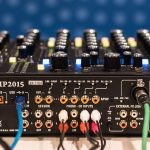
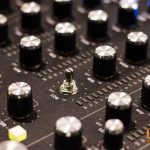
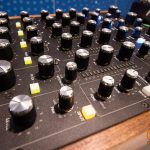
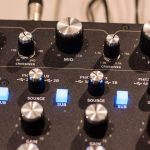
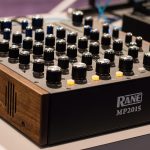

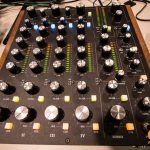
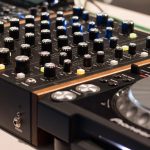
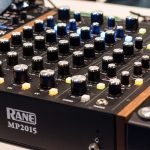

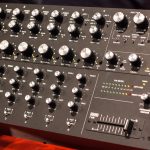


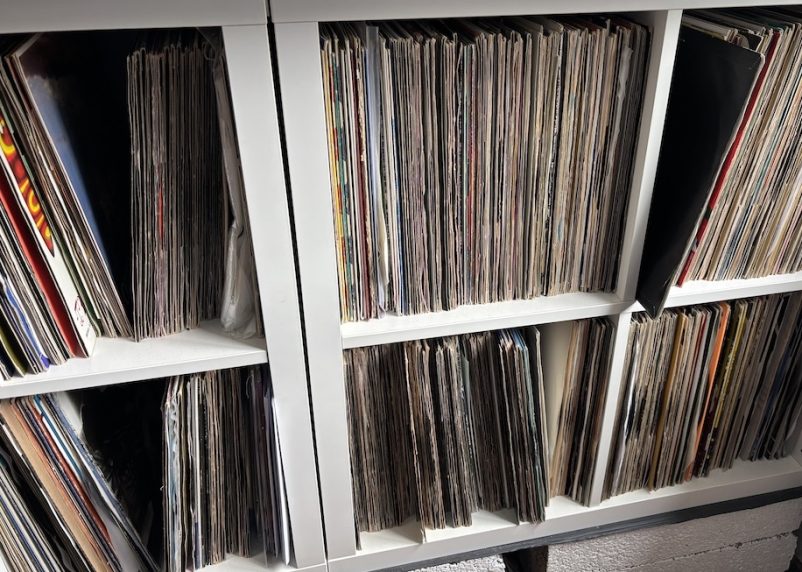
Wow… Just wow… Knobs… Rotaries… Drool… Yeah, you know me.
Sucker for rotary controls.
This beast could easily get me back to my old MIDI set up, with Traktor, soundcard and simple controllers!
What are you using now?
Still my good old Traktor Control S4 and MIDIfighter Classic and MIDIfighter Spectra.
But used to mix on Audio4DJ, BCR2000 and MIDIfighter Classic when I started spinning through MIDI.
(Before that, good old vinyl)
Your reaction is pretty much identical to mine :)
That’s Great Minds Think Alike all over again.
Yep, my thoughts exactly… If only it wasn’t that expensive……
True that, than again… It’s a Rane mixer.
Yeah I know… And i want…
Great article. This mixer take me back to the good old days. Days where a mixer like this was connected to a warm sounding tube amps and the hotter the tube got. The louder and impressive the sound got. Cranking at least 2,000 watts of 70s and 80s disco tracks to the point, it feel like you can’t feel your heart beat. Life was Good.
Note to self: Out of babyoil…..
what a beauty, i hope my gf doesn’t get jealous when i have it
she can buy her own ;)
Hang on a sec….
It’s not supported by Serato s/w or Traktor so therefore it can’t be used with DVS “at all”? Have you forgotten about Virtual DJ?
If your OS can see the MP2015 as an audio interface, then it can be set up for DVS in Virtual DJ.
Not only does VDJ support most common brands of timecode vinyl, Atomix have also just released an updated version of their own.
I said there’s no *OFFICIAL* DVS support. Considering that Virtual DJ works just fine with my Sixty-Four, it probably would work with the MP2015 too.
You know what, let’s add that in. Thanks.
Official? You mean a logo on the mixer? LOL
It was the “at all” statement that caught my attention, as if to say it was impossible to use DVS because Serato / Traktor were ruled out.
IMO it doesn’t need to be “official” – it just needs to work.
Indeed. I’ve added it in.
The effects loop being on the submix does allow you to select individual channels by the way. That’s what it’s for.
My only gripe is that the isolators are on the master and not the submix for the same reasons.
I’m still buying one though :)
I believe that’s exactly what I wrote.
“…you can’t send individual channels through it. It’s either the main output or the submix group, but that’s more than enough – in a way, you can think of your submix routing activators as FlexFX buttons.”
:)
I guess we’re talking semantics :) If it’s the submix group and you can send individual channels to the submix, then you CAN send individual channels to the FX loop.
The way I read your sentence sounds like you can’t send individual channels to the FX loop. Maybe it’s just me :)
I just might re-write that sentence a little, if only to make you happy.
There you go. Better? :)
you are too kind :)
Back to the important stuff, when do they ship again??
Makes me want to play house music all night long….
Say what?
when you in my hut, you know what’s up
Let your mind be free. Relax your body.
All night long.
House Music All Night Long
Are there any wide shots of it sitting between two turntables (or even cd players)? It would help me visualise and fantasise about it in my setup.
Have you looked at the Rane website?
http://dj.rane.com/blog/rane-introduces-the-mp2015-rotary-mixer
Funny. The mixer is in a Traktor setup in one of the pics. I thought the Rane/Serato marriage was monogamous – At least from Ranes part.
I know Serato is quite a slut. Dancing with Akai, Numark, Pioneer and all the other girls, when Rane looks away.
It’s not a serato mixer though.
That was pretty funny though. They have an open relationship. Serato is a very naughty little slut indeed. lol
You mean the pictures from “PLAYMIXER” *lol*
Porn
THIS IS A AWESOME! – RANE has been due for a non serrate dedicated mixer for awhile now – i missed my MP24 and got rid of it when each mount gear went to the 10″ route.
My Xone DB4 has really been garbage and this might be the replacement – and if it’s as high quality as they say – i may even use it as a studio sound card instead of purchasing a separate one (was looking at the Apogee Quartet).
As for effects, well I suppose you could add an external unit like a KP or AN EFX.
@scott frost : exactly my thoughts…my db4 is garbage also…its already up for sale..its the worst build mixer ive owned, id go as far as to say the djm 600 is off better build quality. (Although not soundwise)..cant wait for this to come out and finally buy my end all be all mixer.
Thats a freightening thought and statement, i wonder if the A&H studioboards have the same quality, the big expensive boards for 50 000$
Its a shame that really good brands like A&H, Denon, Marantz, Vestax and now Pioneer are walking the drainpath to hell!
Does anyone else feel that DJM 900 have a more “Cheapy” build to it then say DJM 1000, DJM 2000 or even DJM 800.
At a club i gig at frequently we had to replace the gainpots after say 2 months, the efx button after 3 months. and we had a DJM 800 for over two years and no problem at all. with the same djs and playstyles.
If i pay the exact amount of good money as before i want the exact same really good quality in return.
Not excuses from brandmakers saying we use the equipment different then before. If a mixer cant take the heat in a club, then dont buy it!
If I had this mixer. I will connect my alesis studio effect racks to the MP2015 send + return and connect the master out thru my alesis eq. Shapeing the sound of my mix to studio perfection. Ahhh man, where did I put that credit card?
I had an MEQ 230 when about 20 years ago lol – was a nice little eq.
That’s overkill… I LIKE OVERKILL.
No its MEGA ULTRA COMBO MURDER *LOL*
I had the Xone DB4 really good sounding mixer. I was so disapointed that my mixers was made in china, not UK. I kept it for year babying it and sold it. I read guys having problem with them.
Well at least on OS X it’s been a nightmare. Still no updated drivers that work since OS X Mavericks. it’s quite disgusting.
But do you really think its a main problem with the productionsites in China, as for the DB4, and not just one, two or three batches for the first run.
They cant have sold that many
I mean i had Problems with Pioneer, Denon, Vestax, but not to the extent that ive chucked it away. ive had my fair share of disapoitments, but i got it fixed.
And i had my eye on DB4 for a long time now, but most of the guys you talk with are of the same opinion, its crap, Allen & Heaths move to China made it crap!
I want a mixer that i can litterally take with me in the grave, not some 5000$ that withers away after 5 years. i want the qualitydays back, when a TV held up for about 15years, or a fridge that kept going for 25years.
Not this wear and toss away!, lika mobilephones that you cant change the batteries on, or BT speakers. i mean what a WASTE!
One of my favorite parts of the review “…Rane has calmly stepped onto the stage like a boss and performed the DJ gear equivalent of a mic drop…” Awesome Ray! :)
I want one and I can’t even mix.
I want one and I can’t even!
LITERALLY CAN’T EVEN
Same here.
This kind a gear has a flair and ambience of luxury, just like the hi-end soundsystems and brands, like a MCintosh, Krell or, Apogee speakers
You dont have to know how to mix, just be able to appreciate art, form, beauty and grace. The design and build as we say in the biz ;D
I was up for a E&S DJR 400, BUT, im not sure anymore
Rane has always been one of my favorites, when it all began, and now with the MP2015 they reclaim the clubscene. and not standing on one leg only with scratches and mobiles
the best piece of DJ equipment i have ever seen, the amount of times i have calculated in my head if i should sell my DJM800 and fund the rest to get it. its literally perfect
Hey Ray,
what are the knobs’ sizes? Same as on the Empath or bigger?
And how about their curve? I am a bit spoiled by my Empaths custom curves.
Thanks for giving insight
It’s been a very long time since I’ve actually had my hands on an Empath rotary, so it’s hard for me to answer this question from memory alone. Perhaps you can let us know what you think after you’ve had a chance to try the MP2015 yourself?
Will do so. The Empath knobs are 23mm, 0.9 inches.
The large Mix level knobs are the same as the Mix level knobs on the Empath. The medium sized knobs are the same used on the MP2016 (Input Gain levels) and the small knobs are the same as what’s on the Empath.
Thanks. So lets hope that they are tightly sitting on their shafts. The Empath’s are a bit wobbly if touched at the top because the caps’ inner geometry isnt an entire negative of the shaft.
Oh and… would it be possible to add a fader curve setting to the control panel? (not awaiting any commitment, just if the design allows it generally).
On Flips: I recently had to produce a mix for a Christian group so none of the vocals in pop music could be used as they’re all super suggestive. I was so happy to be able to flip tracks and I used flips extensively
This may be the best love letter to an inanimate object i have ever read.
Inanimate object – reminds me of that scene with Ralph Fiennes from In Bruges!
Inanimate object – reminds me of that scene with Ralph Fiennes from In Bruges!
ITS MISSING A CROSSFADER!!!! RANE HAS FORGOTTON ABOUT SCRATCH DJS!!! SCRATCHING!!! RRRAAAAWWRRRR!!! JOG WHEELS!!!!
Sorry, had to. Jared and I decided we need to figure out how to get a timeshare system going on a group purchase.
My favorite comment was “why did they change the faders to knobs?” – good times.
My favorite comment are,”Why did they change djs to knobheads”
back in the days i used to scratch with rotary knobs on my moms hifi system
i could incorperate a frethless fader to this mixer
I’m going to hang a Radio Shack mixer off the back of the MP2015 just so I can have real meters.
Or you can build a VU Mod, 2015 style,
I love the Xone series, they are so Sexy!
http://www.allen-heath.com/media/XoneV6_MAIN.jpg
No BX, it’s NI who has forgotten about scratch DJs. Apparently. I read it somewhere. ;)
The MP 2015 looks incredible! A few small quibbles with the reporting:
1. An isolator isn’t like an EQ, it’s another name for an EQ. Some have crossover controls, some don’t.
2. The 116dB dynamic range means that the mixer can replicate 116dB of dynamic range in recorded material, not that the mixer always puts out signal at 116dB.
Since we’re quibbling :) isolators are a type of EQ. On mixers the difference tends to be that EQs don’t achieve a full cut while isolators do, hence the name.
Many manufacturers name those wrong.
“EQ” is a pretty generic term that covers everything from basic two-band Baxandall tone controls to fully-parametric eight-band studio pieces, and a lot of stuff in between. The range of attenuation/boost is determined by the specific components used, but electrically speaking they are all arrays of filters with varying levels of configurability (potentiometers vs. fixed-value resistors). You’ll notice on the (fantastic) photo of the 2015 channel EQ section attached to the article that each band is labelled “off” at the counterclockwise travel limit, making them full-cut controls, and yet they are not labelled “isolators.”
In any event, it’s a fine-looking mixer, and I hope I get to play on one some day.
I wonder if the folks at Rane are done making new Serato-enabled mixers?
He Ray, love your thoughts on this unit. Can’t wait to lay my hands on one myself. I think this will definitely be a game changer!
He Ray, love your thoughts on this unit. Can’t wait to lay my hands on one myself. I think this will definitely be a game changer!
I’m all-in for anything that takes DJing back to a focus on playing great music, presented with love and care. (I always doubted the actual real-world usefulness of Flips too. I bet people don’t use it nearly as much as they imagined they would.)
I had a question about the sonic signature of this mixer. Is it what you’d call “pristine”? I wonder about this because a lot of the draw of something like a UREI 1620 is the “warmth” (I know, I know) added by the delightful output TXes.
Also: obligatory pic of the rotary-modded MP24’s I designed and built earlier this year for the club I’m opening in Houston, TX. Too many mods and enhancements to list — but in the end it has a distinctly vintage character, tempered by modern clarity.
rs
arlosballroom.com
So you’re the one responsible for me having to clean drool off my keyboard when reading that post on Rane’s blog! That thing looks AMAZING.
Superduperkudos RANE on introducing the MP2015. As a longtime rotary mixer user myself, this new unit is most welcome and very exciting. Aside from it not supporting Serato DJ (which is a is a HUGE disappointment considering it already has a high-end, built-in dual USB sound card and lugging an external interface just to add another D-to-A conversion to the chain makes me cringe) it looks absolutely fantastic. Hopefully it gets SDJ support soon. Can’t wait to test drive and hear it. That being said, I believe there’s a lot of desire in the market for a more compact, less expensive, 2-channel version of this beautiful beast. Let’s face it, I’m guessing probably 99% of DJs are really only mixing two sources at a time, so a 4-channel mixer is overkill for many. Can’t tell you how many 4-channel mixers I see in the field that are only being used to connect two CDJs or two TTs (or two channels of DVS). The attached concept rendering (below) eliminates two channels, reduces chassis footprint size down to 10″W x 14”H. Master isolator and channel knobs are nice and spread out for comfort. For additional cost and real estate savings, the SUB MIX section is also eliminated since there’s really no need with just two channels to manage, whereas SUB MIX makes total sense with MP2015’s four channels (very cool feature for managing four channels since that can get a bit unwieldily). FX LOOP idea is that it can affect either channel 1, channel 2, or both channel 1 + 2 simultaneously by engaging respective buttons and adjusting a single wet/dry FX LOOP knob.
Channel Sources are…
Channel 1: USB 1A, USB 1B, Phono 1/Line 1, Line 3
Channel 2: USB 2A, USB 2B, Phono 2/Line 2, Line 4
The added flexibility of having two line inputs per channel is enormous. For example, let’s say you have two DJs using two different DVS setups, and for whatever reason they aren’t being routed through USB (probably because it sadly doesn’t support DVS systems). Dual line inputs per channel allows two DJs to simultaneously connect to a 2-channel mixer so all they have to do is simply select which line inputs they’re on without need to unplugging/replugging anything.
There’s also an AUX OUT that can be used for a number of things including sending final mixed signal out to a recording device that is unaffected be the master volume level (just like Empath). 1/4” TRS headphone jack located on front panel (just like Empath).
Like Field of Dreams said, “Build it and they will come”.
Yep, this will do!
Sign me up for a 2+1 channel version. The mixer above looks perfect. Single soundcard supporting Serato.
Somewhere on the Rane website when comparing mixers, I saw this mixer is MIDI mappable. What is and what isn’t mappable? Thanks
I didn’t have time to test this at NAMM, but we’ve already got one in for review – it’s not going to take much longer until you know EVERYTHING about this beast.
Makes me smile as many of my friends laughed when I swapped out my faders for rotary knobs on the Pioneer DJM 3000. Along with the CMX 3000, it had a great feature (and a little bit of a cheat) where a cued up CD would start as soon as the rotary knob moved and when returned to zero, returns to the cue point. So a guy like me that really blends more than mixes, this feature allowed me to enter the mix nice and easy. While I am fully digital now with a Denon MC6000MK2, I still miss the knobs a lot.
It would be nice if the Rane people could add a feature that would send a signal to equipped CDJs or DDJs for rotary fader start.
Who in their right mind gives a damn about serato, this baby should be handled with honor and respect. Vinyl and CDJS, nothing else need to apply.
Rotaries to the ” connoisseurs” of house and electronic music
Rane is stepping up their game twards DJMs and Xones and thats a good thing, how good however needs to be seen, i keep my fingers crossed that this is the only mixer you’ll ever need or have to buy ever again!
And preferably not made in China like everything else!
For People that rave about China, i just say this, i have Denongear made in both Japan and China, i have Allen and Heathgear made both in the UK and China. and other so called hiend gear How come the Japanese and UK made play in another devision, it feels different, it plays different, it acts different.
Japanese need to reclaim their qualitybrands before its to late, i think Europe will never recover however. So i really hope Rane do make their stuff inhouse, in america for that price!
@Knights of the round table: “Who in their right mind gives a damn about serato, this baby should be handled with honor and respect.” – LOTS of us do. I’ve lost count of how many Serato users I’ve heard who want a high-end rotary mixer with built-in dual USB that works with Serato. Curious though, how does using Serato with the MP2015 somehow equate handling it with dishonor and disrespect? Also curious about this statement: “Vinyl and CDJS, nothing else need to apply.” – Please, if you don’t mind, share with us what makes CDs any better than Serato. Last time I checked, both formats are capable of playing make the exact same digital files (AIFF, WAV, etc.)
In spite of the science and logic, I can relate to KOTR’s comment. Such a mixer doesn’t feel as if anything but vinyl should go anywhere near it. Given the spec of the MP2015, and the digital wizardry happening inside, a magnificent rotary only mixer with wooden sides feels like it should only play original Phiily International or Trax pressings played on it. But hey — play what you want on it for me.
Well if that were the case then it shouldn’t have line inputs, digital inputs, or USB, let alone dual-USB. There’s plenty of other high-end rotary mixers already out there that don’t have all these features for the “vinyl only” heads, but the MP2015 does so…
I did say I didn’t make any sense. ;)
lol, it sure doesn’t
Yeah but only those thick 78rpm ones. 33s are for lame ass push button sync DJs.
For your droolers out there, anyone seen or used this, talk about djporn!
http://superstereo.co.uk/wp-content/uploads/DN606.jpg
Yep, familiar, however the DN606 isn’t available at this time, so no one’s heard it yet in the wild, but the 2-channel DN78 is and sounds fantastic. E&S DJR 400 sounds/feels fantastic as well.
Yepp i noticed the DN 606 are in productionen of 2015, so i have my hopes up!, seem lika a great piece of gear
Excellent write up Ray! You express the same feelings I did when I first saw this mixer. I was fortunate to purchase one off the first production run and gave it it’s inaugural session at my residency a couple nights ago…this mixer sounds beautiful! I was playing both vinyl and digital files via Serato SL4 box and the sound was incredibly warm! I was instantly comfortable playing on it and compared to my Vestax PMC46 it is much more user friendly, still lot’s to learn, but looking forward to it!